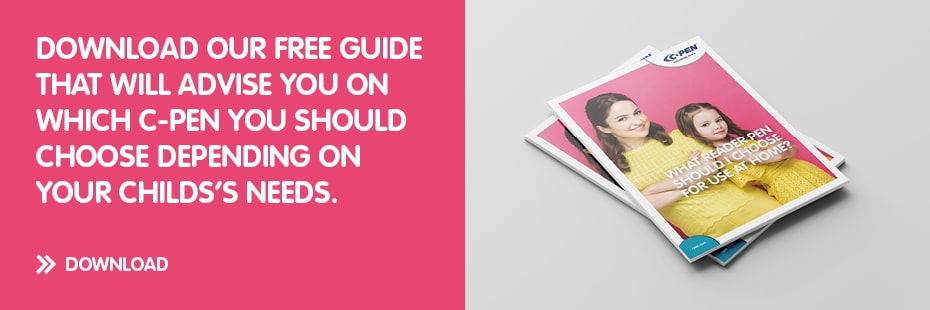
How using a reader pen at home boost students’ self-esteem
As a parent, you want to be able to help your child with their studies 24/7, especially if they have a reading disability. But of course, that’s hard to accomplish in everyday life. With a reader pen, you can give your child a tool that makes them a bit more independent in their reading, boosting their self-esteem.
Falling behind in reading and feeling like a failure can significantly affect kids. Children can lose all desire to learn, to read or go to school, and some begin to act out in class or set low expectations for themselves. Students with learning disabilities or differences like dyslexia also must work harder than their peers to achieve the same results. They can have trouble getting started on a task or need to get instructions repeated. While any child can suffer from low self-esteem, students with learning disabilities are particularly at risk, especially if their condition is undiagnosed. The mismatch between learning style and the task can cause students to doubt themselves and believe poor performance means they are not “smart” and are somehow less skilled than their classmates.
It’s tempting to solve your child’s problems by telling them what to do or solve them yourself. But giving them opportunities to solve problems by themselves is even better. However, it isn’t always easy for a child with a reading disability to solve problems independently. The challenge can sometimes result in frustration, making them give up and wait for you to help them read a paragraph or explain words they don’t understand, which can make you just as frustrated sometimes because you don’t have unlimited time.
A reader pen can empower
To partially solve the problem, you can let your child use a reader pen at home while studying or doing homework. That way, they have a tool that can help them understand. They can scan a word or a sentence in the book that they have difficulty reading. Using text-to-speech (TTS), the pen reads it aloud for them just like you would have done if you were there. If it’s a word they don’t understand the meaning of, the built-in dictionary gives them a definition, both in terms and by voice. They can also get a glossary with words they have had difficulties with and train on them later.
And using text-to-speech is a potent tool for giving students independence and self-esteem. In an article on the George Lucas Foundation’s website Edutopia, Kirsten Kohlmeyer writes, “research demonstrates that using text-to-speech tools increases engagement and allows students to access grade-level content and material, as well as websites and books of interest”. According to her, interaction with curricular content can help students improve their vocabulary, comprehension, reading accuracy, and fluency. “Perhaps most importantly, the use of TTS improves students’ positive feelings about reading and school.”
Control powers self-esteem
With a reader pen at home, your child or young adult will be able to solve a lot of problems on their own without having to ask for your help all the time. It will make your life a little bit easier, but more importantly, it will strengthen your child’s confidence. Because when students believe they have some degree of control over their lives, it can boost their self-esteem and resilience.


